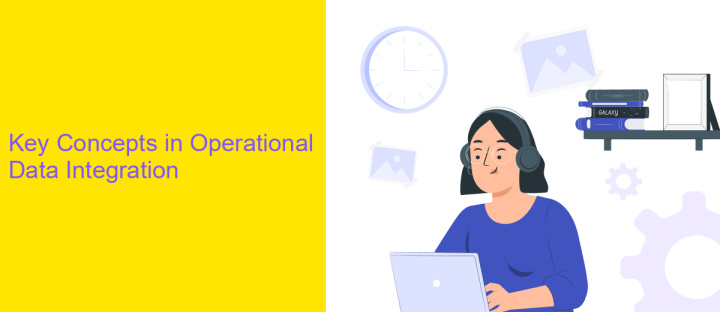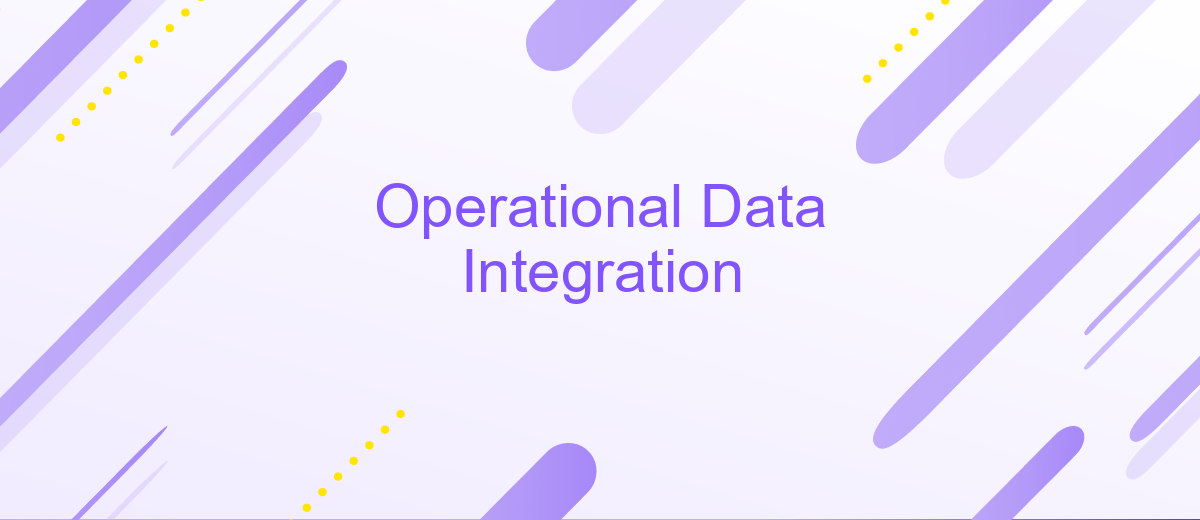Operational Data Integration
Operational Data Integration (ODI) is a critical process that enables organizations to consolidate data from various sources to ensure seamless operations and informed decision-making. By integrating real-time and historical data, businesses can achieve a unified view of their operations, enhancing efficiency, accuracy, and agility. This article explores the key components, benefits, and best practices for effective ODI implementation.
Introduction
Operational Data Integration (ODI) is a critical aspect of modern data management, enabling organizations to streamline their data processes and ensure seamless data flow across various systems. As businesses grow and evolve, the need for real-time data integration becomes paramount to maintain operational efficiency and support decision-making processes. ODI addresses these needs by providing robust solutions that facilitate the integration of disparate data sources into a cohesive, actionable dataset.
- Enhances data accuracy and consistency
- Improves real-time data accessibility
- Facilitates better decision-making
- Reduces operational costs
- Supports regulatory compliance
By leveraging advanced technologies and methodologies, ODI helps organizations overcome the challenges associated with data silos and fragmented data landscapes. This integration not only boosts productivity but also empowers businesses to harness the full potential of their data assets. As a result, companies can achieve a competitive edge by making more informed and timely decisions, ultimately driving growth and innovation.
Key Concepts in Operational Data Integration

Operational data integration involves the seamless combination of data from various sources to ensure that business processes operate efficiently. This process requires the extraction, transformation, and loading (ETL) of data, ensuring that the information is accurate, consistent, and timely. Key concepts include data mapping, where data fields from one source are matched to another, and data cleansing, which removes errors and inconsistencies. Real-time integration is also crucial, allowing businesses to make immediate, informed decisions based on the latest data.
An essential tool in operational data integration is the use of integration platforms like ApiX-Drive. ApiX-Drive simplifies the setup of data flows between different systems, automating the transfer and synchronization of data. This service supports a wide range of applications and can be configured without any coding knowledge, making it accessible to non-technical users. By leveraging such platforms, organizations can enhance their data integration processes, ensuring that their operational data is always up-to-date and reliable.
Benefits and Challenges of Operational Data Integration

Operational Data Integration (ODI) is a critical process for organizations aiming to streamline their data management and improve decision-making. By integrating data from various operational systems, companies can achieve a unified view of their operations, leading to enhanced efficiency and accuracy. However, while ODI offers numerous advantages, it also presents certain challenges that need to be addressed for successful implementation.
- Benefits:
- Improved data accuracy and consistency
- Enhanced decision-making capabilities
- Increased operational efficiency
- Better customer insights and experiences
- Streamlined business processes
- Challenges:
- Data quality issues
- Complexity in integrating diverse data sources
- High implementation and maintenance costs
- Security and privacy concerns
- Need for skilled personnel
In conclusion, while Operational Data Integration can significantly benefit organizations by providing a comprehensive view of their operations and enhancing decision-making, it is essential to address the associated challenges. Proper planning, investment in technology, and skilled personnel are crucial for overcoming these obstacles and ensuring the successful integration of operational data.
Best Practices for Implementing Operational Data Integration

Implementing operational data integration requires a strategic approach to ensure seamless data flow and accuracy. Start by clearly defining the objectives and scope of your integration project. This helps in aligning the efforts with business goals and ensures that all stakeholders are on the same page.
Next, choose the right tools and technologies that match your specific needs. Evaluate different integration platforms based on factors like scalability, ease of use, and compatibility with existing systems. It's crucial to select tools that can handle the volume and variety of your operational data.
- Conduct a thorough data quality assessment before integration.
- Establish robust data governance policies.
- Implement real-time data monitoring and analytics.
- Ensure data security and compliance with relevant regulations.
- Regularly update and maintain your integration systems.
Finally, continuous training and support for your team are essential. Equip your staff with the necessary skills and knowledge to effectively manage and troubleshoot the integration processes. Regularly review and optimize your integration strategy to adapt to changing business needs and technological advancements.


Case Studies of Operational Data Integration Success
One notable example of operational data integration success is seen in a leading retail company that utilized ApiX-Drive to streamline their disparate data systems. By integrating their sales, inventory, and customer data through ApiX-Drive, the company was able to achieve real-time data synchronization across multiple platforms. This not only reduced manual data entry errors but also provided a unified view of their operations, enabling more informed decision-making and improved customer service.
Another case involves a healthcare provider that faced challenges in managing patient data from various sources. By implementing an operational data integration strategy using ApiX-Drive, they successfully connected their electronic health records (EHR), appointment scheduling, and billing systems. This integration allowed for seamless data flow, reducing administrative burdens and enhancing patient care. The healthcare provider reported significant improvements in data accuracy and operational efficiency, showcasing the transformative impact of effective data integration.
FAQ
What is Operational Data Integration?
Why is Operational Data Integration important for businesses?
How can businesses implement Operational Data Integration?
What challenges might businesses face with Operational Data Integration?
Can small businesses benefit from Operational Data Integration?
Time is the most valuable resource for business today. Almost half of it is wasted on routine tasks. Your employees are constantly forced to perform monotonous tasks that are difficult to classify as important and specialized. You can leave everything as it is by hiring additional employees, or you can automate most of the business processes using the ApiX-Drive online connector to get rid of unnecessary time and money expenses once and for all. The choice is yours!

